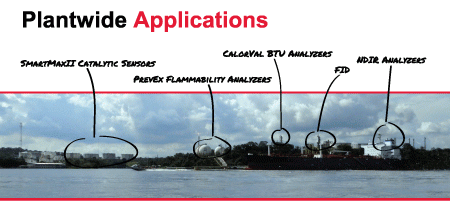
This week's Chemical E-Book topic highlight is: Outlet Oxidizers.
PPM measurement at the outlet of the oxidizer ensures that it does not exceed emission levels. In addition, by monitoring at the inlet and outlet of the oxidizer hydrocarbons can be measured and compared before and after processing, indicating efficiency.
A flame ionization detector at the outlet of the oxidizer ensures that it does not exceed emission levels into the atmosphere.
For a more detailed look at this application, check out this case history:
A specialty chemical company was increasing the production capabilities of one of its four polymer process lines. The increase in production capabilities would come from the upgrade of several process heating sources such as heat exchangers and dryers, as well enhancing the safety of these systems to accommodate increased production loads.
They worked with the Regional EPA in their Pollution Prevention (P2) Program to add an appropriate-sized oxidizer and enhance their flare operations for its increased production capabilities and to upgrade their LFL monitoring system on their batch dryer for safety reasons.
Their goal was to increase energy efficiencies and optimize productivity while reducing emissions, thus saving money. To accomplish it they installed a FID (to measure the total hydrocarbons at the outlet of their oxidizer for destruction efficiency), a BTU Analyzer (to monitor the lower heating value of their varying waste stream), and LFL Analyzers (to read their varying gas composition on their batch dryers).
After 2.5 years of providing continual results to the EPA, the company has been able to show dramatic cost savings and high efficiencies of their processes.

Add new comment